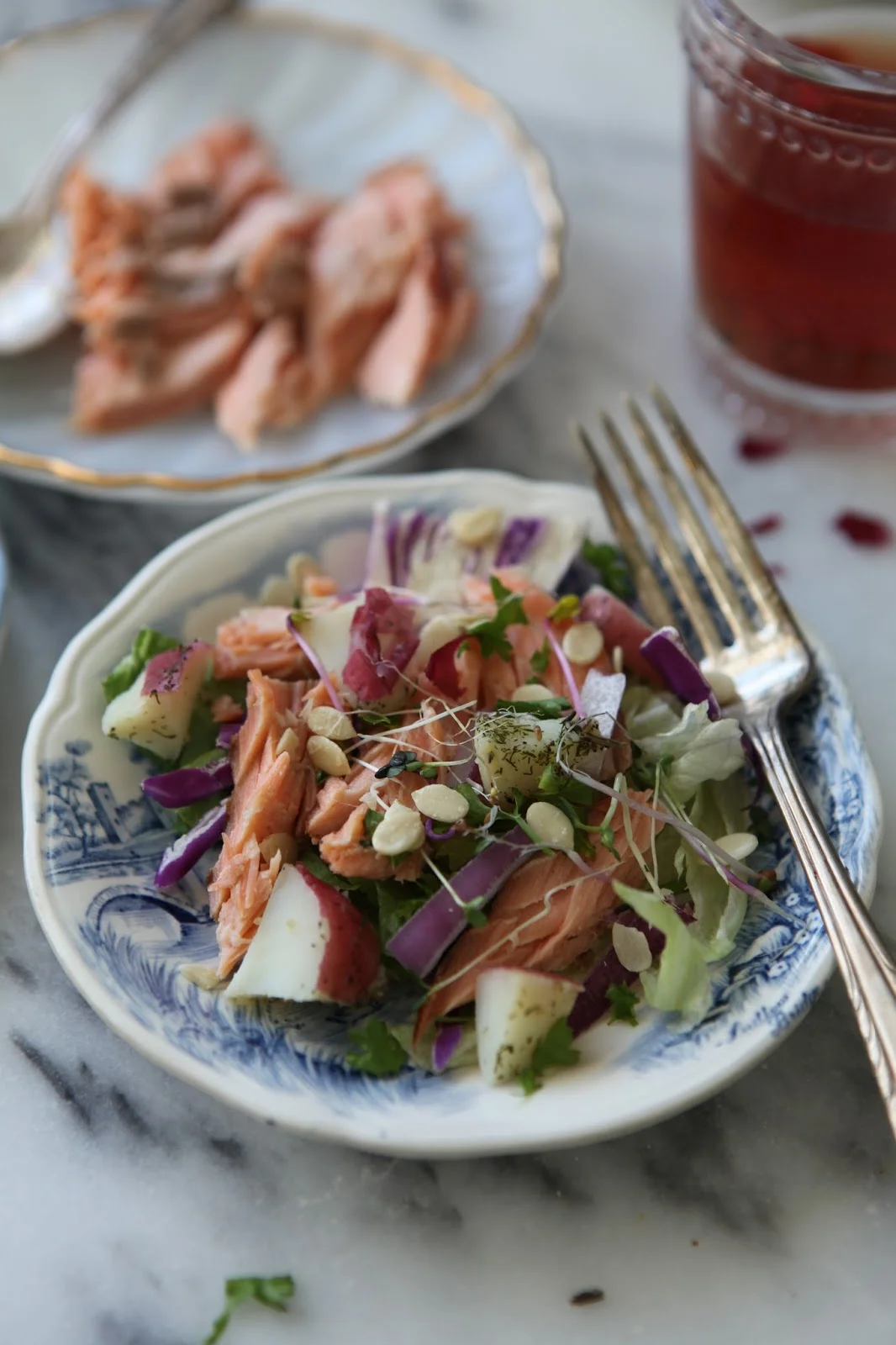4 Tips for Mindful Eating

Turn Off Your Gadgets
Think about what was on your kitchen table during at least one of your recent meals. Most likely you'll miss an item that is a primary barrier for many in mindful eating: technology. Our smartphones that are so often tied to us by the hip follow many of us to our tables. Slowly shift towards having your meals without engaging with your phone or the telly by enjoying at least one quiet meal every week. Find ease in that you can still enjoy a dinner with a move at home from time to time, but as a mindful choice rather than a habitual occurrence.
Put Down Your Utensils
I'm one for lightly noshing while I prepare my meals, primarily because I'm often rungry after my runs. However, one thing I'm cautious of is resisting the urge or convenience of eating straight from the bag or box without plating it. Plate everything you eat, even if it's a small snack to have a clear visual of your portions. Seeing what and how much you eat will allow you to appreciate your serving and each bite more fully.
When you have your food plated, put down your utensils as you chew. We might find ourselves already preparing our next bite right as the previous one has touched our lips. Instead, rest your fork and knife until you have enjoyed & chewed your bite.
Reflect on Sensations & Chew Thoroughly
Before you begin your meal, reflect on your sensations. One main reason for mindless eating is senselessness, both physical and emotional. Are you having senseless thoughts or ones that are not conducive to eating, such as boredom or anger? Are you feeding your body or the void that such discomforts are inflicting on you? Is it food that you are in need of or attentiveness to these emotions? Reflect on your bodily and emotional needs before you eat.
When and if you decide to sit down for a meal or a snack—yes, even snacks should ideally be at a table and not eaten in a rush, on-the-go, or standing up—pay attention to your chewing. When you put down your utensils, aim for at least 20 chews out of each bite, depending on the meal as softer foods yield less chew. Observe the texture and flavour of each component before swallowing. Incorporate the raisin technique, which entails savouring even small elemental aspects of meals, such as raisins, as if eating them for the first time. Make your meal a thorough experience.
Autopilot & Intuitive Eating
Some of us might experience mindless eating due to what I call autopilot eating. With hectic schedules, we end up having to depend on rotating the same meals. This leads to disconnecting from our meals as our minds become far too acquainted to the flavours of our food. We can resultantly find ourselves looking down at an empty plate before we have even realised we were eating it . . .
Changing up meals will not only get us out of this autopilot rut but also shift us away from habitual eating or what we believe we should be eating. It gears us to listen to what we crave or need, seeing ourselves as evolving functional bodies rather than predictable automatons. Before each meal, even if you had planned or prepared it the night before, ask yourself what it is that you truly want at the moment. It might be different than what was grumbling your stomach the night before and most likely the same thing you might have been preparing for the past month.
If it's something other than your possible planned meal that you end up eating, reserve the prepared meal for another time or for your partner to feed your body what it really is humming for. When we eat intuitively this way, we feel more pleased and full, avoiding overeating to compensate for our true cravings or disconnexion from our food.


